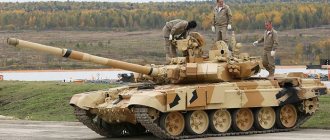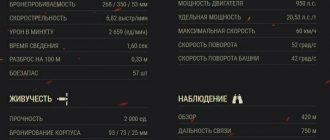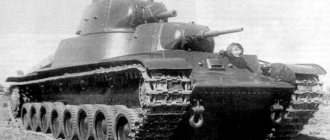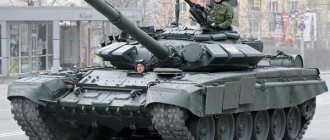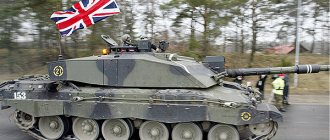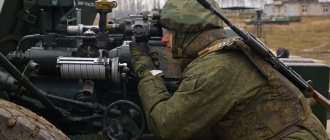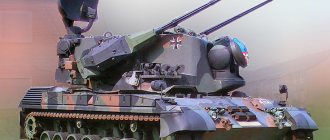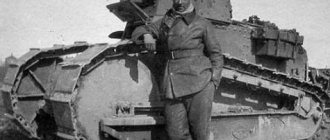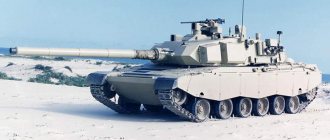The main armored personnel carrier of the French State is Lorraine 37L/38L/39L/41L
Home » Alternative History » Alternatives to World War II » The main armored personnel carrier of the French State – Lorraine 37L/38L/39L/41L
Alternatives to World War II
Parafin 04/21/2013 632
0
in Favoritesin Favoritesfrom Favorites 0
The crushing defeat of France in 1940 left the stamp of “losers” and “defeats” on the armed forces of that country of that period. If we are talking about technology, then we immediately come across widespread opinions about “single-man turrets”, “complex structures”, “short guns”, “dispersal of tanks”, etc. Everything is true, but whoever begins to look more carefully, trying to look at the situation with an unbiased mind, soon becomes convinced that in the thirties the French were able to create a number of advanced models of military equipment. Here we will talk about one of these vehicles, rightly considered the best armored personnel carrier of the initial period of the Second World War - Lorraine 37L/38L/39L.
In 1935, the French army developed technical requirements for a multi-purpose tractor-transporter for infantry and tank units. The TTZ included a weight limit of up to 2600 kg and the ability to transport at least 500 kg of load in the cargo compartment and up to 1000 kg on a trailer. The engineers of the company Lorraine de Dietrich were the first to show their car - in April 1937, the prototype Lorraine 37L was ready. The conveyor turned out to be simple and reliable. The riveted hull was assembled from armor plates 9-12 mm thick, the Delahaye 103TT engine located in the front part had 70 hp, and the open cargo compartment had a load capacity of up to 800 kg (when using a special trailer, the load capacity increased to 1900 kg).
The chassis, applied to one side, had six road wheels per side, interlocked in pairs into three bogies with shock absorption from leaf springs and a vertical block with a spring for each bogie, three support rollers and a front drive wheel (it is interesting that such a chassis arrangement will be used on the new French medium tank NS-41). The tank capacity (144 liters) was enough for 140 km. The Lorraine armored personnel carrier had good tactical and technical characteristics: effective protection, durable chassis, and sufficient maneuverability. No weapons were installed on the 37L, although it was later proposed to arm it with a 7.5 mm machine gun.
After successful tests, only 100 production Lorraine 37L were ordered, although the demand for such machines was very great. Soon they planned to reach a rate of 70 cars per month. In total, 378 copies of the 37L transporters were produced in the year of production before production stopped in the summer of 1940. They entered service with French tank units: a separate tank battalion was entitled to 12 Lorrains, the same number to a light tank brigade, a battalion of B1 tanks - 18 vehicles, and a squadron of cavalry tanks S-35 or N-35 - 3. Thus, the needs of the troops on March 1, 1940 amounted to 695 armored personnel carriers accompanying tanks (in the end, orders reached the number of 1012 copies). They were primarily intended to accompany tank units in breakthroughs. Moving at a speed of 35 km/h. and towing armored tanks, Lorraine 37L were supposed to supply tanks that went on the offensive with ammunition and fuel.
In addition to the transporter, they also began producing a modification designed for transporting motorized infantry - Lorraine 38L VBCP (Voiture Blindee de chasseurs Portes). The hull was significantly redesigned, increasing in height to more comfortably accommodate soldiers and crew. The trailer, adapted for transporting people, was also modified. Now it could carry up to 1000 kg of cargo or 4 soldiers in the cargo compartment, and the trailer could accommodate 6 more people - a total of 12 people with the driver and cabin passenger. This modification was mainly used to transport a squad of motorized infantry or the crew of a towed 25 mm anti-tank gun and 81 mm mortar. A total of 130 38L units were built (were armed with motorized infantry battalions from the 1st and 2nd Armored Divisions).
Lorraine 37L
Lorraine 38L VBCP
The last production modification was the Lorraine 38L RS, which was a command vehicle for commanders of tank companies, battalions and divisions. Depending on the level of control, they were equipped with an ER-55 radio station (company, battalion) or ER-51 and a TM32 telephone (division). The total production volume of Lorraine 38L PC was small - amounting to 10 units. By the way, a “stripped-down” version of “Lorraine” was also produced - as a replacement for the Renault UE2. The lack of capacity for the production of full-fledged machines did not allow them to be put into mass production.
Lorraine 37L with 2 trolleys.
After the defeat of France in 1940, most of the Lorrains went to the Germans as trophies, and were initially used for their intended purpose. It is interesting that the Germans did not even try to restore production of the Lorraine 37L/38L for their needs - apparently “they did not fit into the concept of the Wehrmacht tank forces” (although the French continued to gradually introduce a civilian version of the transporters). When the first problems emerged during the eastern campaign and a shortage of mobile anti-tank weapons was discovered, they remembered the French. Thus, from 330 captured Lorrains, they built 179 anti-tank self-propelled guns equipped with a 75-mm cannon (Sd.Kfz.135 or “Marder I”), 12 self-propelled guns with a 105-mm leFH18 howitzer and 94 self-propelled guns with a leFH13 howitzer (Sd.Kfz.135/ 1). Plus 30 artillery observer vehicles, as well as several ammunition and equipment transporters Munitionstransportkraftwagen auf Lorraine Schlepper. Although the weight of these self-propelled guns has almost doubled, the main characteristics remained at the level of the original vehicle, which indicates the reliability and safety margin of the French transporters. But German alterations are a completely different story.
"Marder I"
Artillery reconnaissance vehicle based on Lorraine 37L
After the end of the Franco-German war, only a couple of dozen Lorraine 37L/38L remained in the French armed forces. Meanwhile, the need for such machines was realized much more acutely after the defeat. In November 1940, it was decided to resume production of armored personnel carriers in the Lorraine 39L version (fortunately, German restrictions did not apply to them). The first prototype 39L was developed in 1940, shortly before the fall of France. Now it was a full-fledged armored personnel carrier without any ridiculous towed carts. The closed wheelhouse was significantly enlarged and now accommodated 2 crew members and 8 dragoons. It was this option that was put into production.
Lorraine 39L VBCP
Initially, production was established in the unoccupied zone at the Fouga plant in Beziers. Pre-war production volumes of 30 vehicles were achieved in the spring of 1941. By that time, the Lorraine company (Luneville) had also resumed production - by the end of 1941, hundreds of armored personnel carriers were already being assembled per month. In addition, a new plant was launched in Bagnères-de-Bigorre (Atelier de Bagnères). The vehicles were willingly taken into the French light motorized divisions - this was how they managed to significantly increase the mobility and stability in battle of their motorized dragoons. The small dimensions of the 39L, combined with intelligently arranged armor - 9 mm for the front and side armor plates, 6 mm for the top and bottom plates and 12 mm for the molded rounded nose - ensured the armored personnel carrier was lightweight: only 6 tons. Taking this into account, the suspension turned out to be not overloaded, very reliable and, most importantly, easy to manufacture. Six large wheels combined into three bogies ensured low ground pressure and good weight distribution.
Lorraine 39L VBCP
By the beginning of 1941, a new model of armored personnel carrier, the Lorraine 41L, was adopted. The body of the armored personnel carrier was significantly expanded - almost up to 2 m - which is explained, first of all, by the need to accommodate a more powerful engine. The latter was a new 125-horsepower petrol Panhard, which provided the car with a top speed of 55 km/h. The length of the hull was also increased (by 42 cm), which made it possible to increase the capacity of the landing compartment, as well as accommodate an additional 100 liter tank. Now with the available fuel supply, the Lorraine 41L could cover 210 km on road and approximately 140 km off-road. The armored personnel carrier handled the latter perfectly (the specific ground pressure was half that of the T-34), and to compensate for the increased weight, the width of the tracks was increased.
To enhance the protection of the driver, who was located in front of the engine, the frontal armor plate was increased to 16 mm, while the sides, top and bottom of the hull remained unchanged. At the same time, the height of the vehicle was increased in order to completely cover the landing forces in a sitting position with armor. The now more spacious tank did not have a roof, but in the front part there was now a turret for a 7.5 mm machine gun. A second such machine gun could be mounted on special pivot mounts in the rear of the hull. In addition, dragoons could fire from personal weapons through closing slits in the armor. The standard weapons (excluding the personal weapons of the transported troops) also included 10 grenades and 10 anti-tank mines, which were stored on special shelves located on the bulkhead between the engine and the landing compartment. In addition to the driver, the armored personnel carrier accommodated a full compartment: the commander (next to the driver) and 8 soldiers in the rear. It was proposed to leave the troop compartment through double doors in the rear of the hull or simply through the sides. The commander of an armored personnel carrier could use a HF radio station, which provided external two-way communication over a range of up to 10 km.
Sea trials of the Lorraine 41L prototype demonstrated the excellent performance of the vehicle. The speed, dynamics and maneuverability of the armored personnel carrier increased, while the chassis was not overloaded and allowed placement of up to 1 ton of cargo in the troop compartment without losing the main performance characteristics. “Lorraine” felt good off-road, overcame trenches up to 140 cm and could climb a slope of 50%. The possibility of using an armored tracked trailer with two road wheels on each side in the form of a 565 liter fuel tank or an open trolley, water and a load capacity of 700 kg has been retained. The Lorraine 41L towed two of these carts without any problems. Interestingly, the armored tank was equipped with a Vulcano pump, capable of pumping all 565 liters of fuel in 12 minutes.
After testing, Lorraine 41L was immediately put into production, replacing the 39L modification on all production lines. It was supposed to be used for transporting infantry on the battlefield, conducting reconnaissance and combat security, as well as for towing artillery systems, transporting ammunition and other cargo. The only major improvement compared to the prototype was the installation of periscopic viewing devices for the driver and commander. The new armored personnel carrier remained easy to manufacture (especially after the introduction of hull welding) and very quickly gained popularity among the troops.
End of part 1.
Berliet armored vehicles
During the First World War it never reached the point of producing armored vehicles, but it produced light tanks FT-17, developed by. Apparently, this circumstance served as the starting point for the creation of wheeled armored vehicles, assembled on their own initiative. During the interwar period, this was a very short period that produced 10 fairly advanced and original designs. All of his armored vehicles were designed by Marius Berlier himself in the hope that with the onset of war the French government would issue large orders for them. Development…
Read more
Laffly armored vehicles
Having created my first trucks, I couldn’t resist the prospect of creating new models of wheeled armored vehicles based on them. True, all the innovations in them turned out to be late and amounted only to a new chassis under the old body. It was in this way that in 1932-1934, 98 armored vehicles appeared at Laffley, created by rearranging the well-preserved armored hulls of American White TVS armored vehicles of the 1917 model on the chassis of a serial 50-horsepower Laffley LC-2 truck with all pneumatic tires and rear gable wheels. ...
Read more
Saumua-Gendron armored vehicles
In the 1930s, the independent French inventor Gendron brought a fresh impetus to the creation of original combat vehicles with new cross-country ability systems. Some of his experimental machines were assembled by the SOMUA company, which is why in history they are known under the brand name SOMUA-Gendron. Gendron began his activities in 1932 and two years later he built a unique three-wheeled armored car. It received a single rear and two front driven and steered wheels, two side drive drums with high lugs, lowered to ...
Read more
Renault armored cars
The rich experience gained during the First World War in creating armored trucks and light armored vehicles was tried to be developed in the post-war years. The development of new wheeled armored vehicles dates back to the early 1920s, when tests of the first three-axle cargo-passenger vehicle MN (6x4) were successfully completed. In the early 1930s, with the beginning of the motorization program for cavalry units, prototypes of the three-axle 7-seater URK transporter with light armor and removable tracks were built on its basis...
Read more

